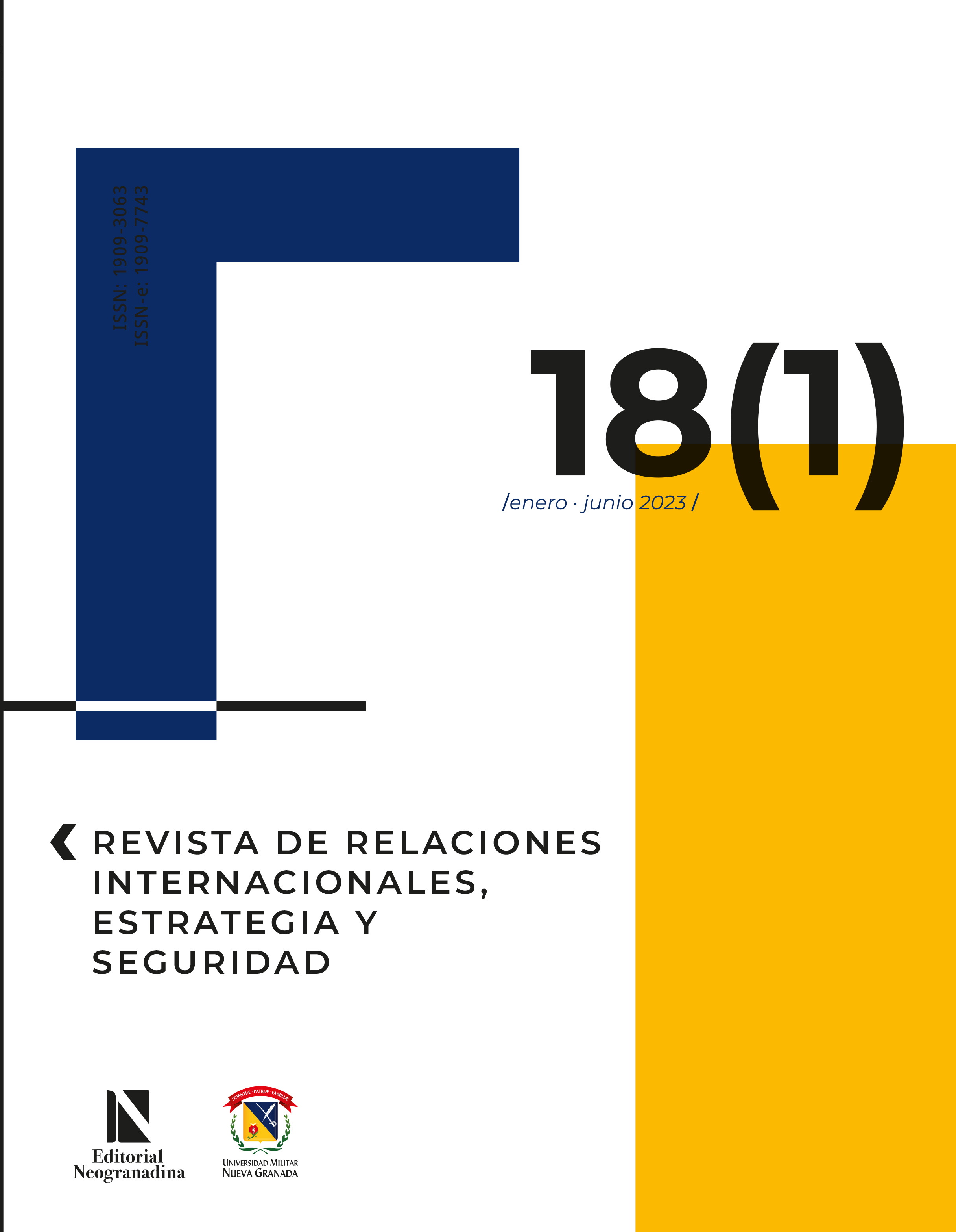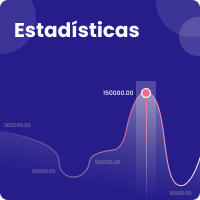Efectos económicos y comerciales de la covid-19. Una revisión desde la economía internacional
Resumen
Se presenta una aproximación a la revisión de literatura referente a los efectos económicos y de comercio de la covid-19, analizados desde la perspectiva de la economía internacional. Para ello se realizó una búsqueda sistemática de documentos arbitrados por pares, tomando como fuente principal la base de datos Scopus (Elsevier), complementada con Science Direct, Google Académico yorganismos multilaterales del orden regional e internacional. A partir del software VOSviewer y con el criterio de selección de co-ocurrencia de palabras claves, se documentó, al final, lo citado en 59 trabajos, mismos que se agruparon en 6 segmentos (teoría, efectos de oferta-demanda-comercio, metodologías de análisis, y resiliencia económica de los países), derivados de los clústeres de los términos co-ocurrentes producto de los resultados bibliográficos, y la de la necesidad de hilar un discurso coherente y sostenible. Entre los hallazgos, se destaca que la pandemia por covid-19 es un fenómeno sin precedentes, por lo que requiere un análisis holístico, desde la oferta, la demanda, el comercio y la política económica (fiscal, preferiblemente), en procura de establecer una línea base de herramientas para sopesar futuras disrupciones exógenas.
Descargas
Referencias bibliográficas
Altunyan, A., Kotcofana, T., y Titova, A. (2021). Stabilization policy of the state in the post-pandemic period. SHS Web Conf., 129, 0100. https://doi.org/10.1051/shsconf/202112901001
Ando, M., y Hayakawa, K. (2022). Impact of COVID-19 on trade in services. Japan & The World Economy, 62, 101131. https://doi.org/10.1016/j.japwor.2022.101131
Ayala, J. L. (2014). Interdependencia compleja. Cuatro enfoques teóricos de la cooperación internacional de los gobiernos subnacionales. Revista de El Colegio de San Luis, 7, 256. https://doi.org/10.21696/rcsl072014595
Baker, S. R., Bloom, N., y Davis, S. J. (2015). Measuring economic policy uncertainty. Centre for Economic Performance (Issue 1379).https://doi.org/10.3386/w21633
Baqaee, D. (2021). Supply and demand in disaggregated Keynesian economies with an application to the COVID-19 crisis. American Economic Review, 112(5), 1397-1436. https://doi.org/10.1257/aer.20201229
Benguria, F. (2021). The 2020 trade collapse: Exporters amid the pandemic. Economics Letters, 205, 109961.https://doi.org/10.1016/j.econlet.2021.109961
Bergstrand, J. H. (1985). The gravity equation in international trade: some microeconomic foundations and empirical evidence. The Review of Economics and Statistics, 67(3), 474. https://doi.org/10.2307/1925976
Cai, D., y Hayakawa, K. (2020). Heterogeneous impacts of COVID-19 on trade: evidence from China's province-level data. IDE Disscusion Paper, 803, 1-29.
Cardoso, M., y Malloy, B. (2021). Impact of the first wave of the COVID-19 pandemic on trade between Canada and the United States. Canadian Public Policy, 47(4), 554-572. https://doi.org/10.3138/cpp.2021-028
Chen, Y. C., Lu, P. E., Chang, C. S., y Liu, T. H. (2020). A time-dependent SIR model for COVID-19 with undetectable infected persons. IEEE Transactions on Network Science and Engineering, 7(4), 3279-3294. https://doi.org/10.1109/TNSE.2020.3024723
Chilan Galarza, I., Garcia Villamar, G., Chimbo Chimbo, C., y Paco, G. C. (2020). Emergencia sanitaria del COVID-19 y su efecto en las relaciones comerciales internacionales del Ecuador. Polo Del Conocimiento, 5(10), 75-88. https://doi.org/10.23857/pc.v5i10.1789
Chudik, A., Mohaddes, K., y Raissi, M. (2021). COVID-19 fiscal support and its effectiveness. Economics Letters, 205, 109939. https://doi.org/10.1016/j.econlet.2021.109939
Correia, S., Luck, S., y Verner, E. (2020). Pandemics depress the economy, public health interventions do not: evidence from the 1918 flu (Paper Ssrn). https://doi.org/10.2139/ssrn.3561560
Davidescu, A. A. M., Popovici, O. C., y Strat, V. A. (2021). An empirical analysis using panel data gravity models and scenario forecast simulations for the Romanian exports in the context of COVID-19. Economic Research-Ekonomska Istrazivanja , 0(0), 1-25. https://doi.org/10.1080/1331677X.2021.1907205
Fan, V. Y., Jamison, D. T., y Summers, L. H. (2017). The inclusive cost of pandemic influenza risk. NBER Working Papers. https://doi.org/10.3386/w22137
Fornaro, L., Fornaro, L., y Wolf, M. (2020). COVID-19 coronavirus and macroeconomic policy. Barcelona GSE Working Paper Series, No. 1168.
Fuchs-Schündeln, N., Popova, I., y Krueger, D. (2021). The fiscal and welfare effects of policy responses to the COVID-19 school closures (Working Paper No. 29398). National Bureau of Economic Research. https://doi.org/10.3386/w29398
Fujita, M., y Krugman, P. (2004). La nueva geografía económica: pasado, presente y futuro. Journal of Regional Research, 4, 177-206.
García-Orosa, B., Canavilhas, J., y Vázquez-Herrero, J. (2023). Algorithms and communication: A systematized literature review. Comunicar, 31(74).https://doi.org/10.3916/c74-2023-01
Giacalone, R. (2009). La iniciativa para la integración de la infraestructura sudamericana (IIIRSA) desde la perspectiva de la nueva geografía económica. Revista Aportes para la Integración Latinoamericana, XV(21), 30-54.
Grumiller, J. (2014). Ex-ante versus ex-post assessments of the economic benefits of free trade agreements: lessons from the North American Free Trade Agreement (NAFTA). OFSE Briefing Papers, Vol. 10.
Gruszczynski, L. (2020). The COVID-19 pandemic and international trade: temporary turbulence or paradigm shift? European Journal of Risk Regulation, 11(2), 337-342. https://doi.org/10.1017/err.2020.29
Guerrieri, V. (2020). Macroeconomic implications of COVID-19: can negative supply shocks cause demand shortages? American Economic Review, 112(5), 1437-1474. https://doi.org/10.1257/aer.20201063
Han, W., Wang, K., y Zhang, Y. (2022). A Review of the Impact of the COVID-19 on the Macroeconomy. Advances in Economics, Business and Management Research, 648, 1029-1033. https://doi.org/10.2991/aebmr.k.220307.169
Hayakawa, K., y Hiroshi, M. (2020). Impacts of COVID-19 on international trade: evidence from the first quarter of 2020. IDE Discussion Paper, Issue 791.
Hayakawa, K., y Mukunoki, H. (2021). The impact of COVID-19 on international trade: evidence from the first shock. Journal of the Japanese and International Economies, 60, 101135.https://doi.org/10.1016/j.jjie.2021.101135
Jošić, H., y Žmuk, B. (2021). The impact of COVID-19 on international trade: an evidence from Croatia. https://www.bib.irb.hr/1159517/download/1159517.a93._Joi_muk_2021_-_2.pdf
Keogh-Brown, M., Wren-Lewis, S., Edmunds, W. J., Beutels, P., y Smith, R. D. (2010). The possible macroeconomic impact on the UK of an influenza pandemic. Health Economicss, 1360, 1345-1360. https://doi.org/10.1002/hec.1554
Keohane, R. O., y Nye, J. S. (1988). Poder e interdependencia. La política mundial en transición (Vol. 53, Issue 9). Grupo Editor Latinoamericano. Colección de Estudios Internacionales.
Kersan-Škabić, I. (2022). The COVID-19 pandemic and the internationalization of production: a review of the literature. Development Policy Review, 40(2). https://doi.org/10.1111/dpr.12560
Khan Jaffur, Z., Seetanah, B., Tandrayen-Ragoobur, V., Fauzel, S., Teeroovengadum, V., y Ramsohok, S. (2022). The impact of COVID-19 outbreak on the Mauritian export trade: a disaggregated analysis. International Trade, Politics and Development, 6(1). https://doi.org/10.1108/ITPD-06-2021-0007
Khorana, S., Martínez, I., y Ali, S. (2021). The impact of COVID-19 on the global and intra- commonwealth trade in goods. International Trade Working Paper. https://doi.org/10.1111/roie.12637
Krugman, P. (1996). Development, geography, and economic theory (Vol. 78, Issue 2). The MIT Press. https://doi.org/10.2307/490811
Li, C., y Lin, X. (2021). COVID-19 and trade: simulated asymmetric loss. Journal of Asian Economics, 75, 101327. https://doi.org/10.1016/j.asieco.2021.101327
Ludvigson, S. C., Ma, S., y Ng, S. (2020). COVID-19 and the macroeconomic effects of costly disasters. NBER Working Paper, Issue 26987. https://doi.org/10.3386/w26987
Maliszewska, M., Mattoo, A., y Van der Mensbrugghe, D. (2020). The potential impact of COVID-19 on GDP and trade. Policy Research Working Paper, Issue 9211.https://doi.org/10.1596/1813-9450-9211
Martin, R., y Sunley, P. (1996). Paul Krugman's geographical economics and its implications for regional development theory: a critical assessment. Economic Geography, 72(3), 259-292. https://doi.org/10.2307/144401
Masood, A., Ahmed, J., y Martínez-Zarzoso, I. (2022). Gravity of COVID-19. Economics Bulletin, AccessEcon, 42(1), 60-68.
Mawusi, C. K. (2020). Economic policy uncertainty and international trade: a gravity model approach. Research Square (Preprint). https://doi.org/10.21203/rs.3.rs-129375/v1
McKibbin, W., y Fernando, R. (2021). The global macroeconomic impacts of COVID-19: Seven scenarios. Asian Economic Papers, 20(2), 2-30. https://doi.org/10.1162/asep_a_00796
Megits, N., Neskorodieva, I., y Schuster, J. (2020). Impact assessment of the COVID-19 on trade between Eastern Europe and China. Journal of Eastern European and Central Asian Research, 7(3), 385-399. https://doi.org/10.15549/jeecar.v7i3.579
Mena, C., Karatzas, A., y Hansen, C. (2022). International trade resilience and the COVID-19 pandemic. Journal of Business Research, 138, 77-91.https://doi.org/10.1016/j.jbusres.2021.08.064
Montenegro, Y. (2020). El comercio internacional y la crisis del COVID-19: una mirada a Latinoamérica internacional. Ojo Al Contexto. Hojas Del Bosque, 6(11). https://doi.org/10.18270/heb.v7i11.3007
Morland, C., Schier, F., y Weimar, H. (2020). The structural gravity model and its implications on global forest product trade. Forests, 11(2).https://doi.org/10.3390/f11020178
Nitsch, V. (2022). COVID-19 and international trade: evidence from New Zealand. Economics Letters, 110627.https://doi.org/10.1016/j.econlet.2022.110627
Ocampo, J. A. (2020). The COVID-19 crisis in Latin America in historical perspective. CEPAL Review, 132, 47-64.https://doi.org/10.18356/16820908-2020-132-3
Posada, H. M., y Vélez, J. E. (2008). Comercio y geografía económica: Una nota sobre la contribución de Krugman a la teoría económica. Lecturas de Economia, 69(69), 299-311. https://doi.org/10.17533/udea.le.n69a748
Rio-Chanona, R. M., Mealy, P., Pichler, A., Lafond, F., y Farmer, J. D. (2020). Supply and demand shocks in the COVID-19 pandemic: an industry and occupation perspective. Oxford Review of Economic Policy, 132.https://doi.org/10.1093/oxrep/graa033
Romero, C., y Zelicovich, J. (2020). El impacto del COVID-19 en las relaciones comerciales internacionales. Relaciones Internacionales en Tiempos de Pandemia, 0(0), 41-42.
Rose, A., Walmsley, T., y Wei, D. (2021). Spatial transmission of the economic impacts of COVID-19 through international trade. Letters in Spatial and Resource Sciences, 0123456789. https://doi.org/10.1007/s12076-021-00271-8
Rungcharoenkitkul, P. (2021). Macroeconomic effects of COVID-19: a mid-term review. Pacific Economic Review, 26(4), 439-458.https://doi.org/10.1111/1468-0106.12372
Saif, N. M. A., Ruan, J., y Obrenovic, B. (2021). Sustaining trade during COVID-19 pandemic: establishing a conceptual model including COVID-19 impact. Sustainability (Switzerland), 13(10), 1-20.https://doi.org/10.3390/su13105418
Ulloa-Barre, N. M., Fajardo-Loayza, V. A., González Illescas, M. L., y Solórzano-Solórzano, S. (2021). Estrategias post COVID-19: desafíos para las empresas exportadoras de productos tradicionales. INNOVA Research Journal, 6(2), 180-195.https://doi.org/10.33890/innova.v6.n2.2021.1636
Vidya, C. T., y Prabheesh, K. P. (2020). Implications of COVID-19 pandemic on the global trade networks. Emerging Markets Finance and Trade, 56(10), 2408-2421. https://doi.org/10.1080/1540496X.2020.1785426
Wang, H. (2021). Using IS-LM model to analyze the effects of COVID-19 on Chinese economy. Advances in Economics, Business and Management Research, 166, 479-482. https://doi.org/10.2991/aebmr.k.210319.087
Were, M., y Ngoka, K. (2022). An assessment of the effects of COVID-19 pandemic on Kenya's trade. WIDER Working Paper, Issue January. https://doi.org/10.35188/UNU-WIDER/
Xie, W., Rose, A., Li, S., He, J., Li, N., y Ali, T. (2018). Dynamic economic resilience and economic recovery from disasters: a quantitative assessment. Risk Analysis, 38(6).https://doi.org/10.1111/risa.12948
Zainuddin, M. R. K. V., Shukor, M. S., Zulkifli, M. S., y Abdullah, A. H. (2021). Dynamics of Malaysia's bilateral export post COVID-19: a gravity model analysis. Jurnal Ekonomi Malaysia, 55(1), 51-69. https://doi.org/10.17576/JEM-2021-5501-4
Zhang, W. W., Dawei, W., Majeed, M. T., y Sohail, S. (2021). COVID-19 and international trade: insights and policy challenges in China and USA. Economic Research-Ekonomska Istrazivanja , 0(0), 1-11. https://doi.org/10.1080/1331677X.2021.1930091
Zhang, Z., Cui, P., Hao, J., Li, N., Zeng, Z., y Liu, Y. (2021). Analysis of the impact of dynamic economic resilience on post-disaster recovery " secondary shock " and sustainable improvement of system performance. Safety Science, 144, 105443. https://doi.org/10.1016/j.ssci.2021.105443

Derechos de autor 2023 Revista de Relaciones Internacionales, Estrategia y Seguridad

Esta obra está bajo una licencia internacional Creative Commons Atribución-NoComercial-SinDerivadas 4.0.











